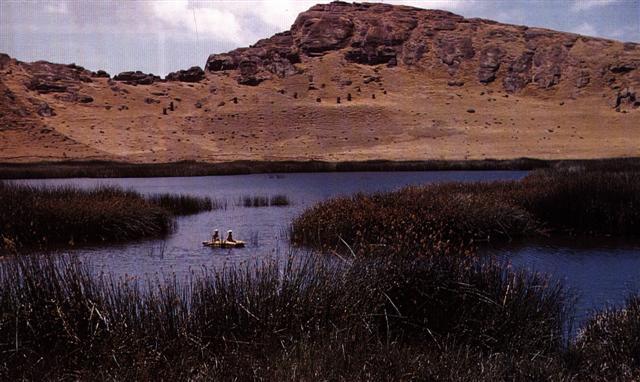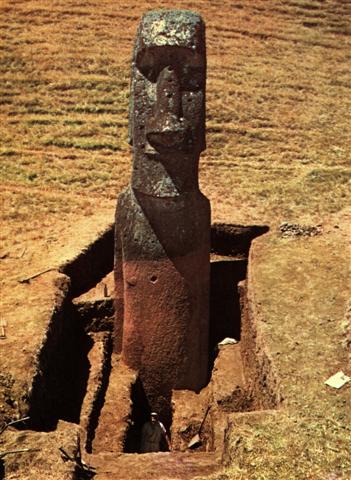The geography of Easter Island is dominated by a pair of 'holes', a great one in the southwest and a smaller one in the northeast, Rano Kau respectively Rano Raraku:
Looking from a point south of the island and north towards the Sun it is rather obvious that the 'hole of entering' must be (correspond to) Rano Raraku and the 'hole for leaving' must be Rano Kau.
The quarry for the moai (the great stone statues) was at Rano Raraku - the location of their birth:
Possibly some statues were intentionally buried so that only their upper part with head and shoulders were visible - symbolizing the moment of birth from Mother Earth.
The hole of death was at Rano Kau in the southeast (toga):
... The king arose from his sleeping mat and said to all the people: 'Let us go to Orongo so that I can announce my death!' The king climbed on the rock and gazed in the direction of Hiva, the direction in which he had travelled (across the ocean). The king said: 'Here I am and I am speaking for the last time.' The people (mahingo) listened as he spoke. The king called out to his guardian spirits (akuaku), Kuihi and Kuaha, in a loud voice: 'Let the voice of the rooster of Ariana crow softly. The stem with many roots (i.e., the king) is entering!' The king fell down, and Hotu A Matua died. Then all the people began to lament with loud voices. The royal child, Tuu Maheke, picked up the litter and lifted (the dead) unto it. Tuu Maheke put his hand to the right side of the litter, and together the four children of Matua picked up the litter and carried it ...
|


